- Heather Howell
- Research Scientist
- Developing Preservice Elementary Teachers' Ability to Facilitate Goal-Oriented Discussions in Science and Mathematics via the Use of Simulated Classroom Interactions
- ETS Educational Testing Service
- Jamie Mikeska
- Research Scientist
- Developing Preservice Elementary Teachers' Ability to Facilitate Goal-Oriented Discussions in Science and Mathematics via the Use of Simulated Classroom Interactions
- ETS Educational Testing Service
- Carrie Straub
- https://www.linkedin.com/in/carriestraub/
- Executive Director
- Developing Preservice Elementary Teachers' Ability to Facilitate Goal-Oriented Discussions in Science and Mathematics via the Use of Simulated Classroom Interactions
- ETS Educational Testing Service
Public Discussion
Continue the discussion of this presentation on the Multiplex. Go to Multiplex



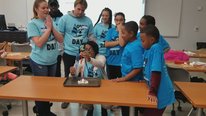
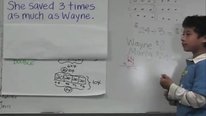
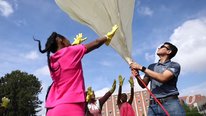
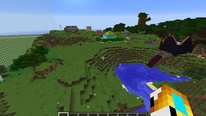
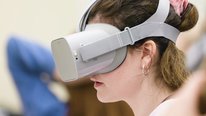
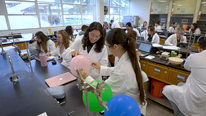
Heather Howell
Research Scientist
Welcome to our project!
We are excited to share our progress on the project! In this fourth year of the project, we are wrapping up data collection and beginning to see results. While we have a ton of scoring and analysis to finish this summer, we’ve been so excited to see the data start to tell the story. Its very clear that the pre-service teachers who participated and the collaborating teacher educators see value in the simulated teaching. The written feedback we provided has been frequently cited as critical in helping pre-service teachers think about improving their simulated teaching, and our teacher educators have particularly appreciated the window that the semi-standardized performance has given them into what their pre-service teachers understand and can do around leading argumentation-focused discussions. And living through this challenging transition to online learning (for the universities and for K-12 schools) has pushed us to start thinking about how simulated teaching, as part of the larger portfolio of interactive practice-based experiences, can not only focus pre-service teachers on particular teaching practices but may contribute resilience to that portfolio by allowing work to continue around disruptions.
We would love to hear from you in the discussion, with questions, comments, or ideas about how the field might use, further develop, or benefit from these kinds of performance tasks.
And if you're interested in the background of the project, we invite you to visit our prior videos, listed below.
2017 showcase video (or navigate to https://stemforall2017.videohall.com/presentations/934)
2018 showcase video (or navigate to https://stemforall2018.videohall.com/presentations/1073)
2019 showcase video (or navigate to https://stemforall2019.videohall.com/presentations/1495)
Alan Peterfreund
Executive Director
This is an interesting platform. Is the platform robust enough to allow for a curriculum developer to use this to support teacher professional development?
Heather Howell
Research Scientist
Really you can use the platform for anything you wish - the limits are less on imagining what is possible and more about what is practical -- primarily how much time you are able to spend on training of the simulation specialist behind the scenes. Jamie has used some of our science tasks for teacher professional development, and we have a hunch that the opportunity to practice absent the potential "harm to students" that comes with real teaching is likely just as critical for practicing teachers trying something new as it is for new teachers. Carrie, how many folks do you think are using the platform for PD?
Carrie Straub
Executive Director
Hi, Alan. We are currently working with about 10 school districts across the country for teacher PD. Our largest engagement for reacher PD is with the Department of Defense Education Activity - this is the school district for the armed forces and we work in all of their bases across the world. Teachers are learning how to include children with autism in classroom instruction as well as how to implement ABA as part of their classroom activities.
Shandy Hauk
Thanks for sharing (in the past and now). I'm wondering about the potential for creating video clips of two (or more) pre-service teachers' interactions and then using those clips to create a professional learning experience for teacher educators. My colleagues and I have developed a variety of video clip-based activities for novice college mathematics instructors. Currently, we are identifying ways to expand the collection to support teacher educators who are novices in teaching mathematics to future elementary school teachers. Hence, my excitement at seeing the progress on your project and my wondering about a potential collaboration that might generate one or more video cases!
Miriam Sherin
Carrie Straub
Executive Director
Hi, Shandy, that is certainly possible. The system allows for recording of any session. One thing to consider is that there are limitations in the virtual environment - for instance students cannot access manipulatives. The system is best suited for discussion-based activities. If you are interested, many sites license the software from Mursion and they might be interested in collaborating with you.
Jamie Mikeska
Research Scientist
Thank you for taking a look at our video. In our work we've been using the Mursion upper elementary classroom to provide spaces for pre-service elementary teachers to practice leading discussions. However, I know that Mursion also has adult avatars to practice other teaching skills, such as communicating with parents as part of a parent-teacher conference. My hunch is that it would be possible to create these types of video clips -- maybe by having one or more of the adult avatars playing the role of a pre-service teacher during the simulation. I also know that Mursion has been using some of their adult avatars as host avatars to help teachers reflect on their teaching in the simulated classroom afterwards, and I could see potential connections to what you mentioned with supporting teacher educators as well. Carrie might be able to say more about this possibility and any current uses that are similar to what you have in mind. Very interesting idea and connection!
Patrick Honner
Teacher
The idea of simulated classroom discussion for pre-service teachers is very interesting. What do see this adding above and beyond, say, having peers or other teachers role-play in a simulated classroom setting?
I'm also curious as to how the student transcripts are generated and delivered. Is it performed live, like a traditional role-play, or is scripted in advance with some improvisation?
Heather Howell
Research Scientist
These questions fit well together, Patrick, because I think one of the main affordances of the simulations does lie in the way you prepare the simulation specialist behind the scenes. Each discussion is performed live by a trained simulation specialist who is controlling all five students, but with a significant amount of training in advance. I would characterize is as somewhere in between scripting and improvisation - we tend to describe it as parameterization, where the students each have starting understandings along with change profiles (what combination of ideas presented by others will allow them to change their understandings and how). The simulation specialist is not making it all up by any means, but they are deciding in the moment which parameters have been met and how to shift. Much of the exact wording is improvised, but the core understandings are carefully rehearsed in advance. It also allows us to make sure desirable challenges come up, so that everyone who does the simulation, while they've had a unique teaching experience, has encountered the same challenges. Not everyone wants this level of standardization, but for our work its been important as it allows the teacher educators to see the variability of performances.
Of course everything I've described in terms of training you can do with human role-players too, or you could ask the simulation specialist running the simulation to ad-lib, so its a bit of a false contrast. However, peer role playing the way most folks use it tends to be a lot less structured, and one could argue that peers (assuming by that we mean other pre-service teachers in a class) may not yet know enough about student thinking to enact the role of students with fidelity. There are scholars who prepare human actors quite rigorously (e.g., Shaughnessy & Boerst's work at University of Michigan; Dotger's work at Syracuse), its just not the most common implementation model.
Another benefit often cited is that they look like children, which may help support better engagement from the participant and remove the distraction of the adult actor's physical appearance, and there are folks who study this, although its not a focus of our work.
Isabel Huff
Patrick Honner
Teacher
Thanks for the thorough explanation, Heather. It makes sense that one person (adequately trained) could manage multiple student characters, and that it is a blend of scripted response and improvisation. I can see that preparing that role (and performing it) would be a challenging and rewarding exercise for an experienced teacher.
I can also see how the use of avatars could create a different dynamic for a pre-service teacher than, say, a small group of role-playing peers.
Isabel Huff
Heather Howell
Research Scientist
I agree, although I think one nice attribute of seeing the technology is that it could also push us in non-technological ways. One could argue (some have) that finding ways to train your PSTs how to represent student profiles with integrity for role playing might in and of itself have real value for them as well!
patrick honner
Leigh Peake
This is a very intriguing approach and I would think particularly relevant for rural states like Maine where it can be difficult to find sufficient placement classrooms for field experiences, particularly for less common placements. I was wondering about how this scales? If I'm understanding correctly how it works, the question would be how many preservice teachers can one simulation specialist feasibly support -- either simultaneously or sequentially?
Carrie Straub
Executive Director
Yes, Leigh, we can support teachers in rural settings who do not have access to clinical field experiences. The system is operated by a simulation specialist who creates a scenario that up to four preservice teachers can sign on to at the same time in a small group. Small groups typically last 60 to 90 minutes so everyone gets at least one attempt at the scenario with feedback on performance objectives from the host avatar. Preservice teachers can also sign on for 30 minute solo practice scenarios to take multiple attempts at the scenario with feedback on performance objectives from the host avatar. The system scales two ways: a) it removes inefficiency by allowing learners to sign on from any where to take part in a virtual experience, rather than requiring learners to come into a location and b) by allowing learners to interact with avatars as Heather mentioned above, which removes the distraction of the adult simulation specialist's physical appearance, supporting better engagement from the participant.
Lynn Farrin
Fascinating! I especially appreciate the efficiency of these sophisticated simulations in their ability to target the more challenging aspects of facilitating argumentation focused discussions. We have begun using simpler simulations depicting afterschool STEM facilitation scenarios in the research of the ACRES project. Certainly much potential with this approach.
Jamie Mikeska
Research Scientist
Agree completely -- there is a ton of potential with these types of simulation-based tools to support teacher learning in both teacher education and professional development! And the most exciting part is that the tools are quite useful in having teachers engage in the content-focused aspects of the work of teaching in various disciplines -- all in a safe environment for teachers to practice, reflect, and debrief and then try again.
Nathan Auck
STEM Coordinator
This is an interesting concept and one that I think has particular relevance to preservice teachers. I love the formative opportunities that could come with this approach, while removing some of the opportunity costs of “live” students (anxiety, “wasting” students’ time, organizing a classroom, etc.).
I am wondering what form the feedback takes on and whether it’s ongoing or given during a single instance?
Carrie Straub
Executive Director
Hi, Nathan, The feedback protocols can be customized based on what you want to achieve. It can be as basic as guided reflection ("What went well? What would you do differently?") or you can create a series of questions around tightly defined performance objectives. Since the simulation specialist who is delivering the scenario is trained to look for specific behaviors related to performance objectives, they are able to recognize and coach around them.
Heather Howell
Research Scientist
The feedback is one place we've put a great deal of emphasis. In this project, we take the video records and behind the scenes they are scored (scores don't go to the teachers) and the raters write feedback at the same time. Feedback is mapped to our scoring rubric and includes a lot of specific details including things the psts might try the next time. To give a sense, the paper you see someone flipping through in the video is an example of an actual feedback report, where each dimension of the rubric is addressed one by one and with about a page of information for each - its not a small amount of feedback! It is delivered at a single time point but the whole cycle happens three times so they have a chance to apply their learning. A lot of other folks have approaches that are less back end heavy and involve in the moment coaching by the teacher educator or peers, or in which videos are self-evaluated or peer-evaluated. What I will say is that the participants pay really close attention to the feedback, so its clear that this is one of the primary learning mechanisms. One set of ongoing research questions that we hope to explore in the next project is what form this feedback might optimally take and where we might be able to cut back in service of scalability without compromising learning.
Nathan Auck
STEM Coordinator
Hi Heather and Carrie,
Thanks for your Responses! That scalability question is one I was thinking about as well. I can see how time-intensive this process would be, but also how productive it could be for teachers both new and experienced!
Miriam Sherin
Great to see this work (again!) - I appreciate the creativity of the approach and find the idea of exploring pre-service teachers' ability to use feedback from contexts that approximate classroom interactions really valuable.
Jamie Mikeska
Research Scientist
Thanks for taking a look Miriam, One of our key findings is about how valuable the formative feedback is to support the preservice teachers in learning and building their teaching skills in these areas. The feedback is also helpful to the teacher educators to help them figure out how best to support the class of preservice teachers over time.
Michael I. Swart
Neat project. The student responses in the virtual classroom are AI generated?
Jamie Mikeska
Research Scientist
Thanks for your question Michael. The student responses are actually not AI generated. There is a human-in-the-loop (what they call the interactor) who responds in real time as the five student avatars, although the teacher does not see the human behind the scenes. The interactor is a human who is amplified by AI and uses special equipment to move and sound like elementary students. As part of this research, we have developed in-depth interactor training materials so that each interactor can deliver each discussion task consistently using previously designed student thinking profiles.